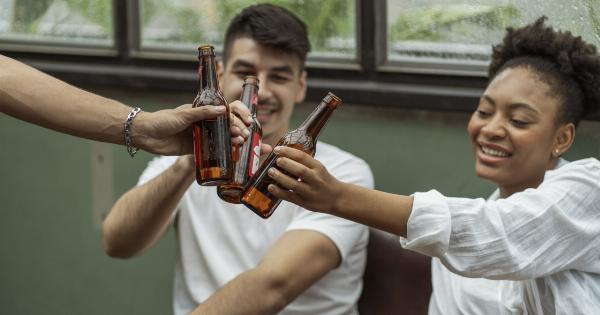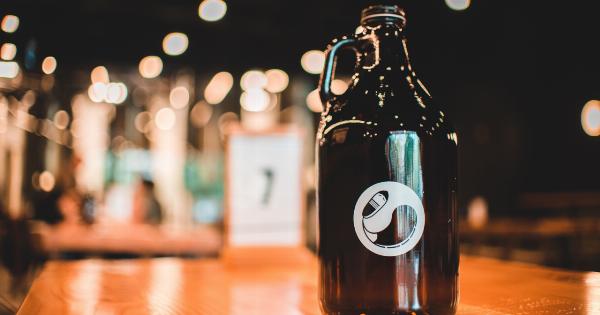Drinking with friends is a common social activity that many individuals engage in. Whether it’s grabbing a pint at the local pub or pouring a glass of wine at a house party, alcohol often plays a central role in social gatherings.
However, it is important to understand the psychology behind drinking with friends and the potential hazards that can arise from these situations.
The Social Facilitation Effect: Drinking as a Group
One of the key factors that contribute to the appeal of drinking with friends is the social facilitation effect. This effect refers to the tendency for individuals to perform better on simple tasks and enjoy them more when in the presence of others.
When we drink with friends, the enjoyment of the activity is often heightened, leading to increased feelings of relaxation and camaraderie.
Peer Pressure and Drinking Behaviors
Drinking with friends can also give rise to peer pressure, which can influence an individual’s drinking behaviors. Peer pressure occurs when individuals feel compelled to conform to the norms and expectations of their social group.
In the context of drinking, peer pressure can manifest in various ways – from encouraging individuals to drink more than they initially intended to engaging in binge drinking episodes.
The Role of Identity and Belonging
Drinking with friends can also be linked to the need for identity and belonging. Humans are social creatures, and our sense of self is often intertwined with the groups we belong to.
Drinking with friends can create a sense of belonging and help individuals establish or reinforce their social identities. However, this can also lead to excessive drinking as individuals strive to fit in or conform to their group’s behaviors.
Reduced Inhibitions and Risky Behaviors
Alcohol is a known disinhibitor, meaning it reduces our inhibitions and lowers our self-control. Drinking with friends can amplify this effect, potentially leading to engaging in risky behaviors that one might not consider while sober.
From unsafe sexual encounters to reckless driving, the combination of reduced inhibitions and peer influence can lead to potentially hazardous situations.
The Link Between Social Anxiety and Drinking
For individuals who struggle with social anxiety, drinking with friends can be particularly appealing. Alcohol can temporarily alleviate social anxiety symptoms, making it easier for individuals to engage in social interactions.
However, relying on alcohol to manage social anxiety can become problematic, as it may lead to reliance, dependence, and an increased risk of developing alcohol use disorders.
The Danger of Excessive Drinking and Alcohol-related Harm
While moderate alcohol consumption can have some health benefits, excessive drinking can have severe consequences. Drinking with friends can worsen the potential hazards associated with excessive alcohol consumption.
From alcohol poisoning to impaired judgment leading to accidents, the risk of harm increases when individuals engage in heavy drinking sessions with their friends.
The Role of Drinking Culture and Norms
Drinking with friends is often influenced by the prevailing drinking culture and norms within a given social group. These cultural norms shape how individuals perceive drinking and can impact the frequency and quantity of alcohol consumed.
In cultures where heavy drinking is celebrated or seen as a rite of passage, the potential hazards associated with drinking with friends can be more pronounced.
Preventing Potential Hazards: Responsible Drinking with Friends
While there are potential hazards associated with drinking with friends, it is possible to mitigate some of these risks through responsible drinking practices. Here are a few strategies to consider:.
- Set personal limits: Before going out, it can be helpful to set personal limits on how much you plan to drink, and stick to them.
- Be aware of peer pressure: Be conscious of the influence of peer pressure and make decisions that align with your personal values and well-being.
- Alternate alcoholic and non-alcoholic beverages: Pace yourself by alternating between alcoholic drinks and non-alcoholic options like water or soda.
- Look out for one another: It’s important to watch out for your friends’ well-being and intervene if someone appears to be in danger or exhibiting signs of alcohol-related harm.
- Plan safe transportation: Make arrangements for transportation in advance, ensuring that everyone gets home safely without driving under the influence.
Conclusion
Drinking with friends can be an enjoyable and bonding experience. However, it’s essential to be aware of the psychology behind drinking with friends and the potential hazards it can present.
By understanding the social facilitation effect, peer pressure, the link between drinking and identity, and the dangers of excessive alcohol consumption, individuals can make informed decisions and engage in responsible drinking practices with their friends.































